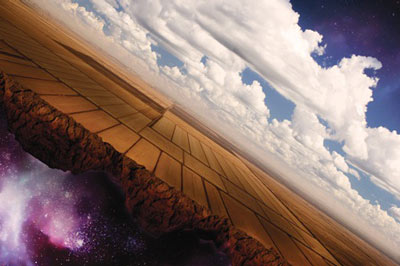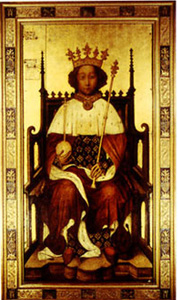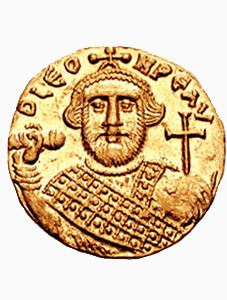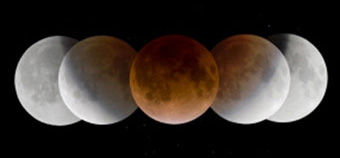
©iStockphoto.com/InkkStudios | Nebula: NASA/CXC/Penn State/L. Townsley et al.
For the last 200 years or so, many anti-Christians have resorted to a scurrilous lie (acting consistently with their worldview1): that the early and medieval Christian Church taught that the earth is flat.2
One of the most prominent recent examples is probably the most powerful man in the world, the US President Barack Hussein Obama:
Let me tell you something. If some of these folks [sic] were around when Columbus set sail–[laughter]–they must have been founding members of the Flat Earth Society [laughter]. They would not have believed that the world was round [applause]. We’ve heard these folks in the past.”3
What did the early church really teach?
Historian Jeffrey Burton Russell (1934–) thoroughly demolished the flat earth myth over 20 years ago in his definitive study Inventing the Flat Earth.5The famous evolutionist Stephen Jay Gould (1941–2002) favourably reviewed this masterpiece:
“There never was a period of ‘flat earth darkness’ among scholars (regardless of how the public at large may have conceptualized our planet both then and now). Greek knowledge of sphericity never faded, and all major medieval scholars accepted the earth’s roundness as an established fact of cosmology.”6Russell showed that flat-earth belief was extremely rare in the Church. The flat earth’s two main proponents were obscure figures named Lactantius and Cosmas Indicopleustes (meaning “voyager to India”). However, they were hugely outweighed by tens of thousands of Christian theologians, poets, artists, scientists, and rulers who unambiguously affirmed that the earth was round. Russell documents accounts supporting earth’s sphericity from numerous medieval church scholars such as friar Roger Bacon (1220–1292), inventor of spectacles; leading medieval scientists such as John Buridan (1301–1358) and Nicholas Oresme (1320–1382); the monk John of Sacrobosco (c. 1195–c. 1256) who wrote Treatise on the Sphere, and many more.
One of the best-known proponents of a globe-shaped earth was the early English monk, theologian and historian, the Venerable Bede (673–735), who popularized the common BC/ AD dating system. Less well known was that he was also a leading astronomer of his day.7
In his book On the Reckoning of Time (De temporum ratione), among other things he calculated the creation of the world to be in 3952 BC, showed how to calculate the date of Easter, and explicitly taught that the earth was round. From this, he showed why the length of days and nights changed with the seasons, and how tides were dragged by the moon. Bede was the first with this insight, while Galileo explained the tides wrongly centuries later.8
Here is what Bede said about the shape of the earth—round “like a ball” not “like a shield”:
“We call the earth a globe, not as if the shape of a sphere were expressed in the diversity of plains and mountains, but because, if all things are included in the outline, the earth’s circumference will represent the figure of a perfect globe. … For truly it is an orb placed in the centre of the universe; in its width it is like a circle, and not circular like a shield but rather like a ball, and it extends from its centre with perfect roundness on all sides.”And the leading church theologian of the middle ages, Thomas Aquinas (1225–1274), wrote in his greatest work Summa Theologica/Theologiae:
“The physicist proves the earth to be round by one means, the astronomer by another: for the latter proves this by means of mathematics, e.g. by the shapes of eclipses, or something of the sort; while the former proves it by means of physics, e.g. by the movement of heavy bodies towards the centre, and so forth.”9
Orbs of medieval rulers

Figure 3: Richard II of England, coronation portrait, Westminster
Abbey.
Credit: Wikipedia.org
Credit: Wikipedia.org

Figure 2: Henry III, Holy Roman Emperor (1017–1056), being
presented with the orb of kingship.
Credit: Wikipedia.org
Credit: Wikipedia.org

Figure 3: Coin of the Byzantine emperor Leontius (d. 705)
Credit: CC-BY-SA Classical Numismatic Group, Inc. www.cngcoins.com
Credit: CC-BY-SA Classical Numismatic Group, Inc. www.cngcoins.com
As early as the 5th century, medieval European kings carried a symbol called the globus cruciger, Latin for ‘cross-bearing orb’, as a Christian symbol of royal power. The orb, usually a golden sphere, represented the earth—hang on, a sphere representing a flat earth—something’s wrong here … oh that’s right, it was a spherical earth. It was topped by a cross to symbolise Christ’s lordship over the earth, and held by the ruler to symbolise that he had been entrusted to rule his lands. In medieval portraits, the scale didn’t indicate physical size but importance, hence the large size of the cross.
Indeed, there are many pictures portraying Christ Himself holding the orb, the classic Salvator Mundi (Saviour of the World) theme.
Why did people oppose Columbus?
The above demonstrate that Columbus (1451–1506) was never opposed by flat earthers, simply because there were none to oppose him, among either church or political leaders. So what was the real issue?Columbus was trying to reach India by sea, the ‘long way’ around the earth. But to do that, his ships had to carry enough provisions for the length of the journey. He had learned that the 9th-century Persian astronomer Alfraganus had estimated each degree of latitude spanned “56⅔ miles”. But Columbus thought Alfraganus meant the Roman mile (1,480 m, 4,856 ft), whereas he was using the Arabic mile (1,830 m, 6,004 ft). Thus Columbus thought that the earth’s circumference was only about ¾ of its actual length of about 40,000 km (25,000 miles). Columbus also greatly underestimated the distance between Japan and the Canary Islands as 3,000 Italian miles (3,700 km or 2,300 miles), whereas the distance by sea is more like 19,600 km (12,200 miles).
It was thus the size of the earth, not the shape, that was under dispute. His critics argued that ships of his day (1492) could not carry enough fresh water and food for such a huge journey. And they were right! Columbus was just lucky that an enormous continent was in the way. He knew nothing of previous Viking discoveries centuries earlier. And he still thought he had landed in the East Indies, the then-current name for the Indian subcontinent. The results of his mistake persist today, in the common name for the Native Americans—‘Indians’, a translation of Columbus’ Spanish term ‘indios’.
Sailors
An example of the misinformation in the ‘education’ system comes from the 20th-century high-school history textbook The American Pageant by Thomas Bailey. Many of its editions claimed, “The superstitious sailors [of Columbus’ crew] … grew increasingly mutinous … because they were fearful of sailing over the edge of the world.”However, sailors were well aware of the shape of the earth. One myth states that people realized that the earth was round because they saw ships slowly sinking below the horizon. But before telescopes, it was more likely the other way round: sailors returning to land saw high mountains before lowlands.
Also, sailors from the northern hemisphere crossed the equator well before Christ, and reported that in the South, the sun shone from the north. They also knew how to measure their latitude from the angle of the sun at noon, which works only with a spherical earth.
The rise of the Flat Earth lie
The above are the facts about Columbus. The much-parroted flat-earth myth about him comes not from history but from the tales of Washington Irving (1783–1859), The Life and Voyages of Christopher Columbus (1828). Irving was probably America’s first genuine best-selling writer, but he admitted that he was “apt to indulge in the imagination.” Flat-earth belief was certainly a figment of his imagination.It was bad enough that this myth entered the public perception thanks to Irving’s wide readership. But it became worse when it acquired the veneer of scholarship, so it could be used as a club with which to bash Christianity. The main propagandists for this cause were the notorious 19th century anti-Christian bigots John William Draper (1811–1882) and Andrew Dickson White (1832–1918). Draper, a fine chemist and photographer—first president of the American Chemical Society—but a lousy historian, wrote History of the Conflict between Religion and Science (1874) as a poorly informed polemic against the Church. White was a disgruntled ex-Episcopalian and the founder of Cornell University as the first explicitly secular university in the United States. He also published the two-volume work History of the Warfare of Science with Theology in Christendom (1896).
Both authors relied heavily on the work of Cosmas, portraying his flat-earth teaching as typical rather than the almost forgotten, extreme minority view that it was. And they are the ones most responsible for the discredited ‘conflict thesis’ between Christianity and science, instead of the real history that the Christian world-view was responsible for science in the first place, while it was still-born in other places like ancient Greece and China.10
Colin Russell (1928– ), Emeritus Professor of History of Science and Technology at the Open University, writes:
“Draper takes such liberty with history, perpetuating legends as fact that he is rightly avoided today in serious historical study. The same is nearly as true of White, though his prominent apparatus of prolific footnotes may create a misleading impression of meticulous scholarship.”11Both J.B. Russell and Gould argue that Draper and White had an agenda to discredit Christians who opposed the then-new theories of Darwin as ‘flat earthers’. Nothing much has changed!
Flat earth leader is an evolutionist
Although hardly anyone in the Church has ever believed the flat earth myth, “Incredibly, some people still do,” wrote Natalie Wolchover in Live Science last year:“The Flat Earth Society is an active organization currently led by a Virginian man named Daniel Shenton. Though Shenton believes in evolution and global warming, he and his hundreds, if not thousands, of followers worldwide also believe that the Earth is a disc that you can fall off of.”12So next time an evolutionist calls you a ‘flat-earther’, point out that the leading flat-earther is one of his fellow evolutionists!
Lunar eclipse
Ancient proof of round earth

Figure 4: Time-lapse photos of the moon during a lunar partial
eclipse, clearly showing the circular shadow produced by the ball-shaped earth.
“Either then the earth is spherical or it is at least naturally spherical. And it is right to call anything that which nature intends it to be, and which belongs to it, rather than which it is by constraint and contrary to nature. The evidence of the senses further corroborates this. How else would eclipses of the moon show segments shaped as we see them? As it is, the shapes which the moon itself each month shows are of every kind—straight, gibbous, and concave—but in eclipses the outline is always curved: and, since it is the interposition of the earth that makes the eclipse, the form of this line will be caused by the form of the earth’s surface, which is therefore spherical.”13This lines up with the Bible: Isaiah 40:22 tells us that God “sits above the circle of the earth”. Indeed, the Hebrew word גוּח (khûg) implies ball-shaped, just as Bede taught about 1,400 years after Isaiah.
Summary
Almost all the early and medieval church scholars who commented on the earth’s shape explicitly said it was round.Medieval European rulers used a golden sphere or orb called the globus cruciger to represent the earth under Christ’s rule.
Columbus’s opponents never disputed the shape of the earth, but only its size—and they were right!
The flat earth myth began with a fictional account of Columbus in the 19th century by Washington Irving. Then it was aggressively pushed in influential anti-Christian polemics by Draper and White.
A final irony: the leading flat-earther today is an evolutionist.
References and notes
- Sarfati, J., Evolutionist: it’s OK to deceive students to believe evolution, creation.com/deceive, 24 September 2008. Return to text.
- For many examples, see Bergman, J., The flat-earth myth and creationism, J. Creation 22(2):114–120, 2008; creation.com/flat. Return to text.
- Obama, B.H., Speech on energy at Prince George’s County Community College, Largo, MD, 15 March 2012. Return to text.
- Muehlenberg, B., The Obamanator and the Decline of the West, billmuehlenberg.com, 12 May 2012; Sarfati, J., Gay ‘marriage’ and the consistent outcome of Genesis compromise, creation.com/gay, June 2012. Return to text.
- Russell, J.B., Inventing the Flat Earth: Columbus & Modern Historians, Praeger, 1991. Return to text.
- Gould, S.J., The Late Birth of a Flat Earth, in: Dinosaur in a Haystack: Reflections in Natural History, 1st paperback ed., pp. 38–50, New York: Three Rivers Press, NY,1997. Return to text.
- Henderson, T., World-famous astronomers celebrate the Venerable Bede, The Journal, journallive.co.uk, 13 February 2009. Return to text.
- The Galileo affair is another anti-Christian myth of ‘religion v. Science’, although it was really science vs. science. See Sarfati, J., Galileo Quadricentennial: Myth vs fact, Creation 31(3):49–51; creation.com/galileo-quadricentennial. Return to text.
- Thomas Aquinas, Summa Theologiae, Question 54: The distinction of habits, Article 2, Reply to objection 2. Return to text.
- Primary source documentation is available in my articles, Why does science work at all? Creation 31(3):12–14, 2009; creation.com/whyscience; and, The biblical roots of modern science, Creation 32(4):32–36, 2010; creation.com/roots. Return to text.
- Russell, C.A., “The Conflict of Science and Religion”, in: Encyclopedia of the History of Science and Religion, p. 15, New York 2000. Return to text.
- Wolchover, N., Ingenious ‘Flat Earth’ Theory Revealed In Old Map, Live Science, 23 June 2011. Return to text.
- Works of Aristotle I: p. 389. Return to text.
No comments:
Post a Comment